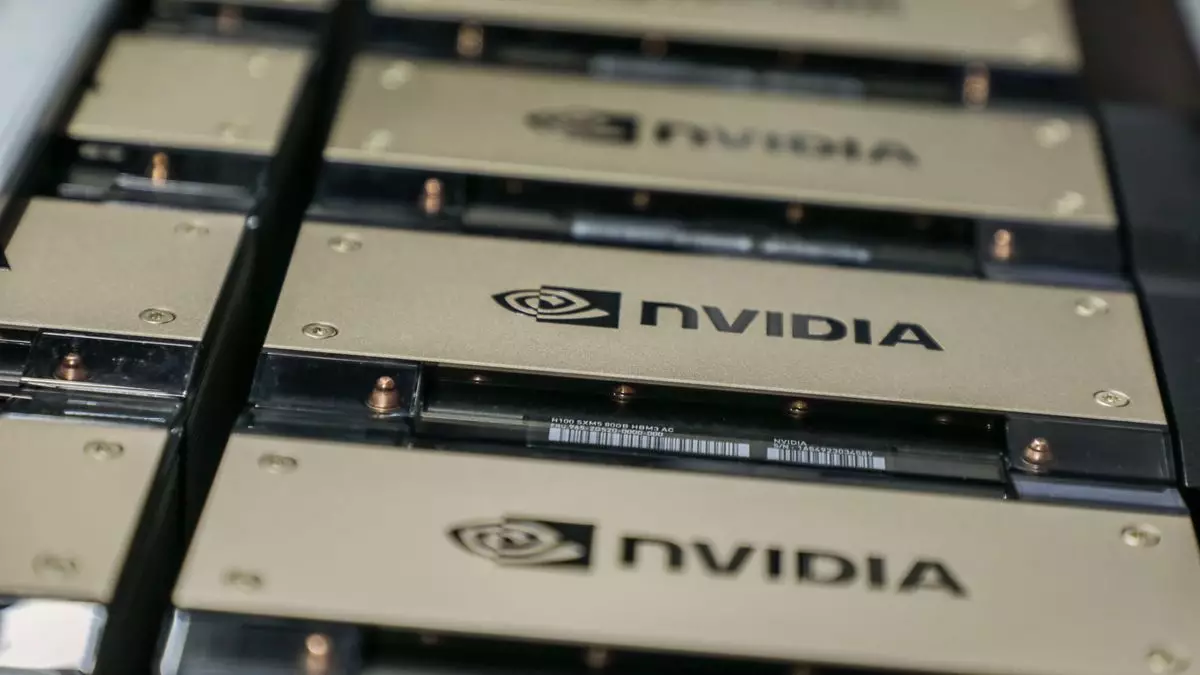In an era where high-performance computing plays a crucial role in transforming the digital entertainment landscape, Nvidia stands out as a trailblazer. The company’s remarkable commitment to enhancing gaming graphics is epitomized by its creation of a dedicated supercomputer, a powerful asset primarily focused on iterating and refining its Deep Learning Super Sampling (DLSS) technology. This article delves into the significance of Nvidia’s efforts in the realm of artificial intelligence (AI) and gaming, highlighting the impact of continuous learning in advancing graphics performance.
At its core, Nvidia’s DLSS technology represents a monumental shift in how video games are rendered. DLSS employs sophisticated AI algorithms to upscale images, making lower-resolution graphics appear sharper and clearer without the associated rendering costs. The technology relies heavily on extensive pre-training, a fundamental aspect that ensures its effectiveness. Nvidia’s commitment to this process is not just an afterthought but a long-term investment that elevates the entire gaming experience.
The arrival of DLSS 4 during the CES 2025 showcased significant advancements. Nvidia’s Vice President of Applied Deep Learning Research, Brian Catanzaro, emphasized how this new iteration moves away from traditional convolutional neural networks in favor of a transformer model—a modern architectural approach that allows for more nuanced processing of visual data. Such a shift is not merely academic; it reflects a deeper understanding of the complexities involved in image rendering, allowing gamers to enjoy unprecedented levels of detail and fluidity.
One standout revelation from the recent event was the existence of a supercomputer operating around the clock for an entire six years, solely focused on refining DLSS. This dedicated resource, comprising thousands of the latest GPUs, highlights Nvidia’s seriousness about its graphics technology. The notion of a supercomputer laboring ceaselessly to enhance the quality of simulated images speaks volumes about the company’s dedication to innovation. Unlike conventional methods that may involve sporadic testing and development periods, Nvidia has established a continuous feedback loop that seeks to identify failures in image rendering.
Catanzaro outlined a critical process whereby failures—such as ghosting, flickering, or blurriness—are meticulously analyzed. Understanding why these issues arise is essential for advancing the DLSS model. This commitment to deducing the intricacies of AI-generated imagery not only optimizes the current model but also significantly improves future iterations, creating a virtuous cycle of enhancement.
Nvidia’s approach to improving DLSS goes beyond mere technical adjustments; it forms an intricate training regimen filled with data-driven insights. The company actively compiles an ever-expanding dataset that showcases exemplary graphics and the specific challenges posed to DLSS across a multitude of games. This dataset is pivotal, as it enables Nvidia to retrain the model for better performance, ensuring that the final product can handle a diverse range of graphical scenarios.
What sets Nvidia apart in this regard is its rigorous testing protocols, which involve assessing DLSS across hundreds of games. This exhaustive evaluation process not only refines the technology but also bolsters confidence for end-users who can anticipate a consistently high-quality gaming experience.
Finally, the implications of such intensive research and development extend beyond mere hardware capabilities. The ongoing evolution of DLSS underscores a broader understanding of player expectations in gaming. Modern gamers seek more than just enhanced visuals; they desire fluidity, realism, and immersion in their gaming experiences. Nvidia’s commitment to continuous learning and adaptation through its supercomputer signifies a robust effort to meet these demands head-on, ultimately transforming gameplay into an art form that leverages cutting-edge technology.
As Nvidia continues to innovate, its dedication to improving DLSS stands as a testament to the potential of AI in gaming. By harmonizing technology with creativity, Nvidia not only enhances the graphical fidelity of games but reshapes how players engage with digital worlds. The future looks promising, as the company’s ongoing research and development efforts signal a new dawn for gaming graphics where the lines between reality and digital artistry continue to blur.

